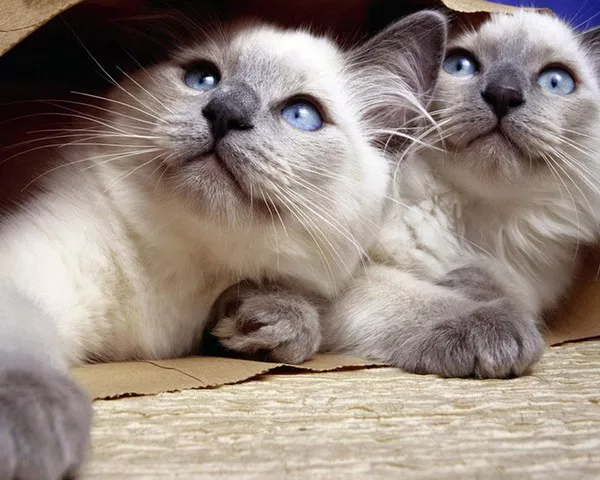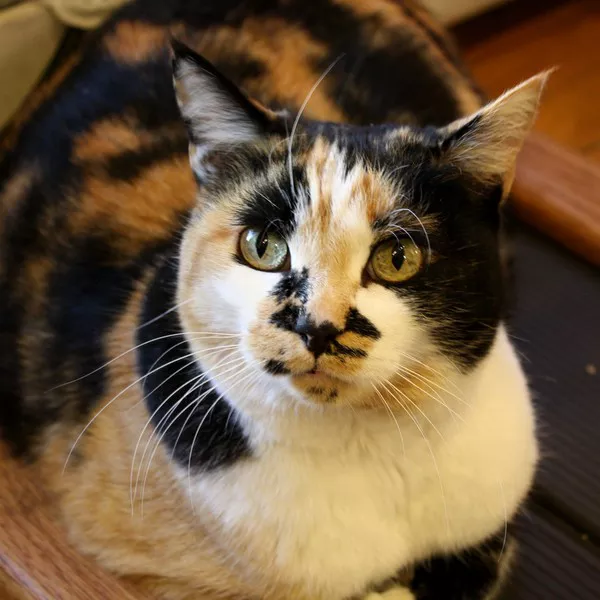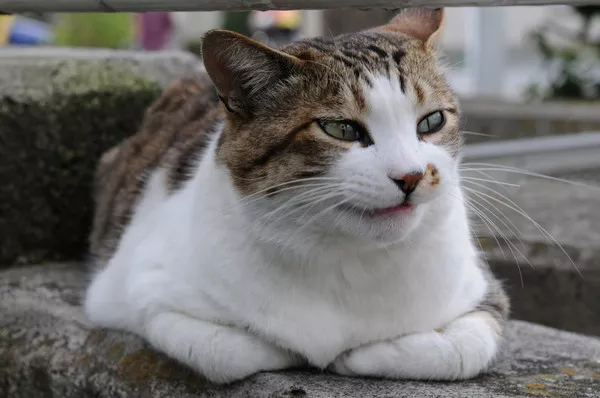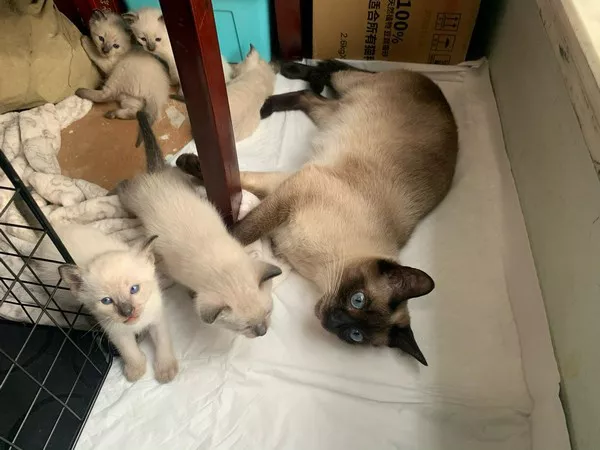Siamese cats, with their distinctive color points, almond-shaped blue eyes, and vocal personalities, are among the most iconic and beloved cat breeds worldwide. The allure of Siamese cats extends beyond their physical beauty to encompass their rich history and cultural significance. In this exploration, we embark on a journey to unravel the enigmatic origins of Siamese cats, tracing their roots through time and across geographical landscapes.
A Glimpse into Ancient Siam
The story of Siamese cats begins in the ancient kingdom of Siam, now known as Thailand. While the exact timeline remains shrouded in the mists of time, historical evidence suggests that Siamese cats held a special place in the hearts of the Siamese people as far back as the 14th century.
1. Royal Companions:
Siamese cats were cherished as royal companions, believed to possess mystical qualities and bring good fortune to their owners.
Historical records indicate that Siamese cats resided within the inner sanctums of the Siamese royal palace, where they were pampered and revered.
2. Cultural Significance:
The presence of Siamese cats in the royal court underscored their cultural significance. They were seen as symbols of elegance, grace, and prosperity.
Siamese cats appeared in ancient Siamese manuscripts and were depicted in artworks, highlighting their esteemed status.
3. Temple Guardians:
Beyond the royal court, Siamese cats found a place of honor in Buddhist temples, where they served as guardians of sacred spaces.
Monks valued the cats for their companionship and believed that their presence brought blessings and protection.
The Mysterious Journey to the West
While Siamese cats were revered in their homeland, it wasn’t until the 19th century that these feline ambassadors embarked on a mysterious journey to the West, capturing the imagination of cat enthusiasts and aristocrats alike.
1. Royal Gifts to the West:
The first recorded introduction of Siamese cats to the Western world occurred in the mid-1800s when the King of Siam (now Thailand) gifted a pair of Siamese cats to the British consul-general in Bangkok.
These regal felines, named Pho and Mia, marked the beginning of Siamese cats’ presence in Europe.
2. Exhibition and Acclaim:
Siamese cats quickly gained popularity in Europe and the United States. They made their debut at cat shows and exhibitions, garnering admiration for their unique color points and elegant appearance.
The Siamese cat‘s distinctive features, including the color pattern known as “point coloration,” where the body is lighter than the extremities, fascinated cat enthusiasts.
3. Recognition by Cat Associations:
Siamese cats received official recognition from cat breeding associations, solidifying their status as a distinct and prized breed.
The Siamese cat’s striking appearance and sociable nature endeared them to cat fanciers, leading to the establishment of breeding programs to preserve and enhance their desirable traits.
Decoding Siamese Cat Characteristics
The allure of Siamese cats extends beyond their historical journey to encompass the unique characteristics that define the breed. Understanding the physical and behavioral traits of Siamese cats adds depth to the appreciation of their origins.
1. Color Points:
One of the most defining features of Siamese cats is their color points. The fur on their ears, face, paws, and tail is darker than the rest of their bodies.
This distinct coloration is a result of a temperature-sensitive enzyme that produces pigments in cooler areas of the body.
2. Almond-Shaped Blue Eyes:
Siamese cats are renowned for their striking blue almond-shaped eyes. The intensity of their gaze is a hallmark of the breed.
The blue eye color is genetically linked to coat color and adds to the captivating allure of Siamese cats.
3. Sleek Body and Fine Coat:
Siamese cats have a sleek, fine coat that lies close to their bodies, accentuating their graceful and slender physique.
The short coat requires minimal grooming compared to long-haired breeds, but regular brushing helps reduce shedding and maintain coat health.
4. Vocal Personality:
Siamese cats are known for their vocal nature. They are not shy about expressing their thoughts and desires through a range of vocalizations, from gentle purring to more insistent meowing.
Their communicative skills contribute to the interactive and engaging nature of the breed.
5. Affectionate and Social:
Siamese cats form strong bonds with their human companions and thrive on social interaction. They enjoy being part of the family dynamic and often seek out companionship.
Their affectionate nature makes them loyal and devoted pets.
Cultural Symbolism and Siamese Cats
Beyond their regal history and distinctive characteristics, Siamese cats have also left an indelible mark on various cultures, symbolizing different qualities and embodying diverse meanings.
1. Symbols of Good Luck:
In Thai culture, Siamese cats are considered symbols of good luck and prosperity. Their presence in homes is believed to bring positive energy and fortune.
The Siamese cat’s historical association with the royal court further enhances their significance in Thai culture.
2. Guardians of Temples:
Siamese cats’ role as guardians of Buddhist temples reflects their revered status in the spiritual realm. Their presence in temples is seen as a source of protection and blessings.
Monks appreciate the companionship of Siamese cats, fostering a harmonious relationship between feline and human.
3. Aristocratic Companions:
In Western cultures, Siamese cats became synonymous with elegance and refinement. Their presence in aristocratic households and appearances at cat shows elevated their status.
Siamese cats were often depicted in literature and art, contributing to their cultural significance.
Siamese Cats in the Modern World
As Siamese cats continue to enchant cat lovers around the globe, their presence in the modern world is a testament to their enduring appeal and adaptability.
1. Popular Companion Animals:
Siamese cats remain popular as companion animals, appreciated for their beauty, intelligence, and engaging personalities.
They thrive in households where they receive ample attention, affection, and opportunities for mental and physical stimulation.
2. Diverse Color Variations:
While traditional Siamese cats exhibit the classic color points, breeding programs have introduced diverse color variations within the breed.
Modern Siamese cats may come in a range of color patterns, expanding the visual diversity of the breed.
3. Contributions to Other Breeds:
The unique traits of Siamese cats, including the temperature-sensitive coloration, have influenced other breeds through crossbreeding.
Some breeds share the striking blue eyes and color points characteristic of Siamese cats.
Caring for Siamese Cats: Tips for Cat Enthusiasts
As cat enthusiasts welcome Siamese cats into their homes, understanding their specific care requirements is essential for fostering a happy and healthy relationship. Here are some tips for caring for Siamese cats:
1. Social Interaction:
Siamese cats thrive on social interaction and companionship. Spend quality time with your Siamese cat through play, petting, and engaging in interactive activities.
Consider adopting two Siamese cats to provide each other companionship, especially if you have a busy schedule.
2. Mental Stimulation:
Stimulate the intellect of Siamese cats by providing puzzle toys, interactive play sessions, and opportunities for exploration.
Engaging their minds helps prevent boredom and ensures a content and well-rounded Siamese cat.
3. Warm and Cozy Spaces:
Recognize their sensitivity to temperature by providing warm and cozy spots for relaxation. Siamese cats may enjoy sunny areas or heated beds, especially during cooler seasons.
Ensure they have access to comfortable bedding and consider creating vertical spaces for them to climb and observe their surroundings.
4. Regular Grooming:
While Siamese cats have short coats that require minimal grooming, regular brushing helps reduce shedding and keeps their coat in optimal condition.
Pay attention to dental care, as Siamese cats can be prone to dental issues. Incorporate tooth brushing into their routine for optimal oral health.
5. Routine Veterinary Care:
Schedule regular veterinary check-ups to monitor the health of your Siamese cat and address any potential issues promptly.
Discuss preventive care measures, including vaccinations, dental care, and parasite control.
6. Respect Their Vocal Nature:
Embrace the vocal nature of Siamese cats and respond to their communicative cues. Recognize that their vocalizations are a form of interaction and expression.
Build a strong bond by acknowledging and understanding their unique ways of communicating.
Conclusion: The Timeless Legacy of Siamese Cats
Siamese cats, with their storied past and enchanting presence, have left an indelible mark on the world of feline companionship. From their revered status in ancient Siam to their journey to the West and their continued popularity in the modern era, Siamese cats embody a timeless legacy.
As cat enthusiasts welcome these regal feline companions into their homes, they become custodians of a rich cultural heritage and guardians of a breed that has charmed its way into the hearts of millions. The enigmatic origins of Siamese cats add a layer of fascination to their already captivating allure, inviting cat lovers to appreciate the beauty, intelligence, and cultural significance encapsulated in every Siamese cat’s gaze.

























